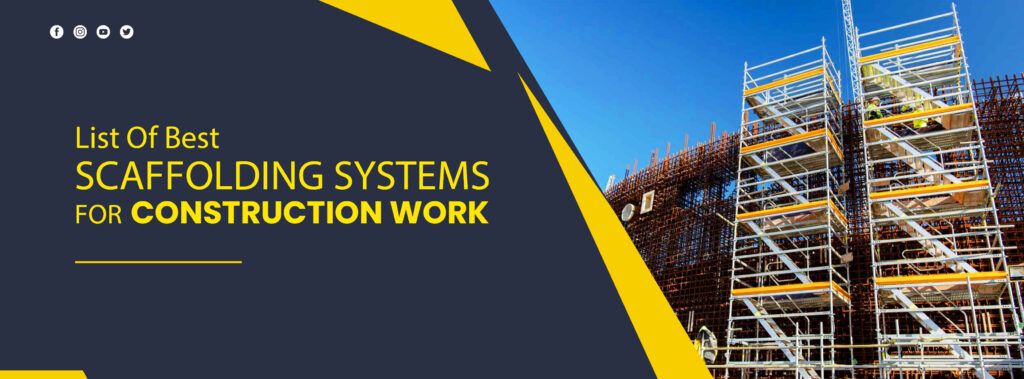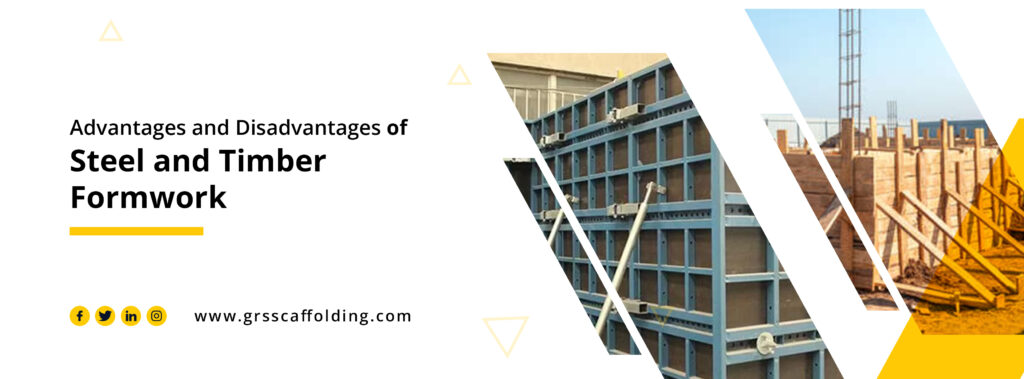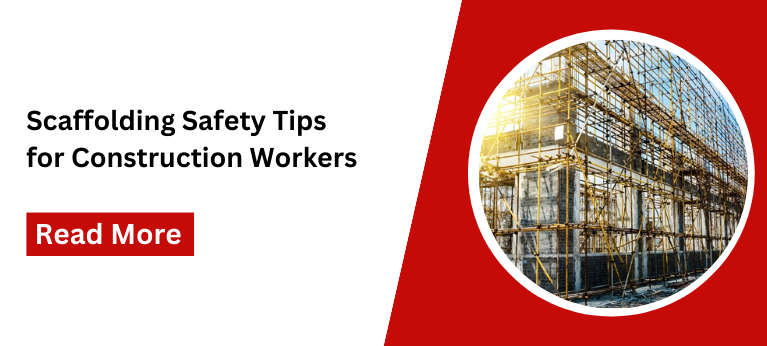Formwork is an important part of the concrete construction of different structures like buildings, bridges, and dams. It is nearly impossible to build a strong concrete structure without formwork.
Steel formwork, plywood formwork, aluminium formwork, fabric formwork, and plastic formwork are some of the most widely used formwork in recent times across the globe.
In this article, we will discuss the various components of formwork. But before discussing formwork components, it is important to understand what shuttering formwork is.
What is Shuttering Formwork?
A shuttering formwork is typically a short-term mould or structure designed to support and shape fresh concrete. The formwork is made of a variety of materials, including wood, steel, plywood, and aluminium. These materials are categorised according to their names, such as wood formwork. steel formwork, etc.
As an example, formwork for columns is referred to as column formwork. Formwork is also categorised using the name of a structural member. Formwork for other structural members is categorised similarly by their names. Slab formwork, beam formwork, pier formwork, wall formwork, etc. are a few examples.
Concrete structures rely heavily on formwork as it requires time & effort, and should have sufficient strength to support any loads, such as a live load or a dead load of concrete that are applied to it.
Components of Shuttering Formwork
Shuttering formwork typically consists of five parts or components, each of which is essential to its formation and implementation. The five components are as follows:
Ties
A form-work tie is a tensile element used to join the formwork’s opposing sides. It offers a stable connection or is employed to fend off the fresh concrete’s pressure effectively.
The majority of form ties are made of steel, but some can also be made of fibre-reinforced plastic. There are many different types of cable ties, and different manufacturers have different ratings for their tensile strength.
Some ties, like coil ties and bolts, can be reused while others are left in the cast wall. Although heavy-duty cable ties have a tensile strength of over 60,000 pounds and can be reused as well.
Anchors
A form anchor is a tool used to securely fasten the form to the pre-placed concrete. Typically, during installation, the equipment is embedded in concrete. The anchor’s actual bearing capacity is determined by
- The anchor’s design and construction,
- The type and strength of the concrete incorporated into the anchor,
- The region where the concrete and the anchor come into contact,
- The depth and location of the embedded component in the member.
Spacer from Side
The side spacer is a piece of equipment that keeps the necessary space between the steel bars and the vertical shuttering. Additionally, it is regarded as one of the most crucial formwork elements.
Props
Props are vertical supports underneath the formwork. It carries a shuttering load in addition to other loads like a structure load, a material load, a craftsman load, and so forth.
Although it can be made of wood in the conventional formwork system, heavy construction should use steel or aluminium instead.
Hangers
A form-work hanger is a tool used to suspend formwork loads from components such as structural steel, precast concrete, or others.
Final Words
If you do not have any prior knowledge of shuttering formwork components and you need high-quality shuttering formwork components then you can contact some of the renowned formwork component providers in India.
You can try out GRS Scaffolding & Formwork, which is a well-known manufacturer and supplier of formwork shuttering components and accessories in Pan India. They are well-known as the most trusted manufacturers and suppliers for completing specific constantly changing demands from clients.


